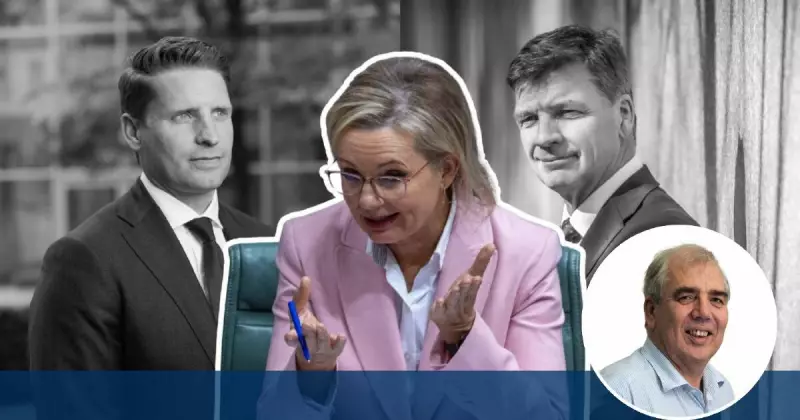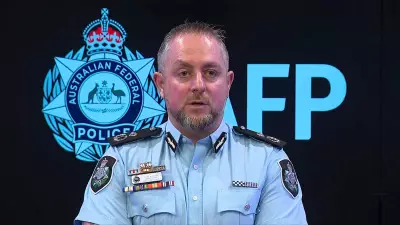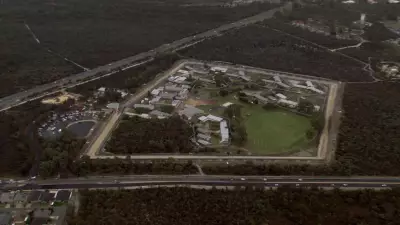
The Australian Liberal Party faces an existential crisis that could see the next non-Labor prime minister emerging from outside their ranks, according to veteran political analysis. The party's internal divisions, abandonment of net zero commitments, and failure to connect with younger and metropolitan voters have created what some describe as a recipe for permanent opposition.
The Policy Crisis Dividing Liberals
At the heart of the Liberal Party's troubles lies the bitter internal conflict over climate policy. The decision to drop the net zero by 2050 target has exposed deep rifts within the party, with moderates like Opposition Leader Sussan Ley reportedly opposed to the move but ultimately defeated by conservative numbers.
As former Liberal staffer Peta Credlin noted in her column for The Australian, winning back office requires detailed planning that the Liberals currently lack. The perception that the coalition was weak on climate change action contributed significantly to their heavy defeat in the May election, yet the party appears to be doubling down on unpopular positions.
The public rejection of Liberal climate policy is particularly pronounced among younger voters, women, better-educated Australians, and first-and second-generation migrants. These demographic shifts represent a fundamental challenge to the party's traditional base of support.
Leadership Void and Unconvincing Alternatives
Current Opposition Leader Sussan Ley finds herself in an untenable position, forced to advocate for policies she doesn't believe in while facing constant leadership speculation. Her performance in selling the new climate policy has been widely described as unconvincing, undermining her authority within the party.
Potential replacements don't fare much better in analysis. Angus Taylor, while experienced in senior ministerial roles, failed to develop compelling new policy or win public trust during his time in government. His effectiveness as shadow treasurer under Peter Dutton's leadership was described as even worse.
Andrew Hastie presents another possible leadership candidate with better stylistic potential, but questions remain about his commitment to detailed policy work beyond simple slogans and populist gestures. The assessment from within suggests he has shown little evidence of possessing the comprehensive vision needed to lead the party back to relevance.
Electoral Mathematics and Demographic Reality
The Liberal Party's fundamental electoral challenge lies in changing demographics and voting patterns. The conservative wing's belief that the party should focus on outer suburban and regional voters ignores the mathematical reality that winning government requires success in metropolitan seats where the Liberals have suffered near-total wipeout.
The rise of teal independents and One Nation creates additional complications. Any attempt to appease One Nation voters risks further alienating moderates, while winning back teal supporters requires policy positions that would anger the party's conservative base.
This electoral squeeze has led to speculation about the potential emergence of a new centre grouping that could progressively squeeze the Liberals out of relevance. Such a grouping would need to attract both disenchanted Liberal moderates and conservative economic voters comfortable with climate action and good governance.
The Long Road Back from Political Wilderness
Most analysis suggests Labor could remain in power for at least two more terms given current Liberal disarray, unless Labor suffers major scandals or governance failures. This timeline gives the Liberals approximately eight years to rebuild—a process that requires more than just changing leaders.
The party needs what Credlin describes as a detailed plan to make a difference rather than simply hoping to change the government. This involves developing a compelling narrative about Australia's future that goes beyond press releases and clever slogans.
Attracting high-quality candidates remains crucial but increasingly difficult while the party's prospects appear grim. The assessment concludes that the next non-Labor government might not be a Liberal one, and the next non-Labor prime minister may not even be in parliament yet.
The Liberal Party stands at a crossroads where traditional approaches no longer resonate with enough Australians to form government. Their path back to relevance requires fundamental renewal rather than cosmetic changes, a challenge that may prove too difficult for the current generation of Liberal politicians.





